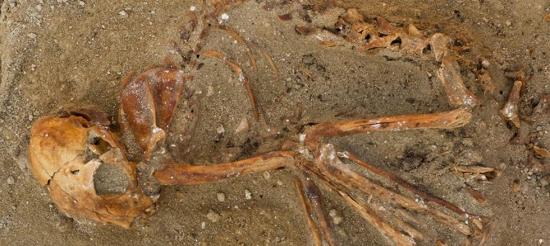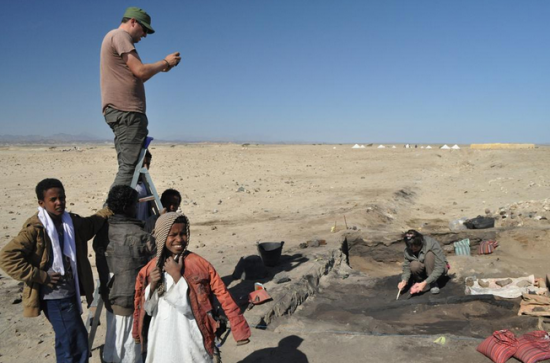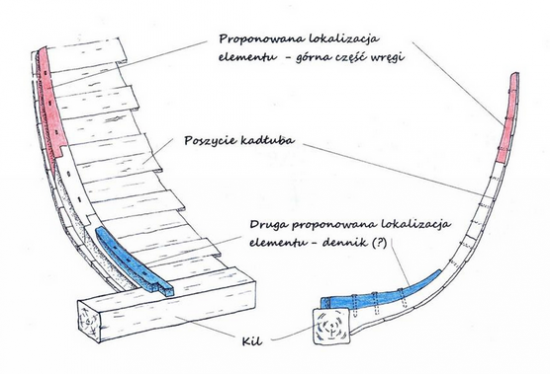Source - http://www.pasthorizonspr.com/index.php/archives/08/2014/uncovering-berenike-an-ancient-port-on-the-red-sea-coast?

Animal burial at Berenike. Image: K. Braulińska/Berenike Project, PCMA UW
Archaeologists working at the ancient port of Berenike on the Red Sea coast of Egypt have started to uncover an ancient Roman era ship’s hull and an extensive burial ground for animals. They have also started to pinpoint some of the major buildings of the port through geophysical work.
Berenike was founded in the 3rd century BC by Pharaoh Ptolemy II (285-246 years BC). Initially, the port was used for shipments of African elephants. The ruler had decided to use these animals in battles against Egypt’s enemies, as access to the Indian elephant was cut off, so an independent source from Eastern Sudan, Eritrea and Ethiopia was needed. The city was also a refuge and place of temporary residence for seafarers, traders and the general public from the remotest corners of the world.

Excavation of the ship. Image S.E. Sidebotham/Berenike Project, PCMA UW
“Undoubtedly this year’s most interesting find here is the wooden-hull and ribs forming part of a ship which sailed during the early Roman period, “explains Iwona Zych from the Centre of Mediterranean Archaeology of Warsaw, who directs the research jointly with Prof. Steven e. Sidebothamem from the University of Delaware in the United States.
First of its kind
This is the first fully preserved hull of a vessel dating to this period in Egypt. The place of discovery leads researchers to believe that the ship was disassembled and its parts stored in a warehouse in the port area. Currently, archaeologists are investigating the find and detailed measurements will allow an approximate reconstruction of the size of this ship.
“This will be the first time we will know the actual size and construction of this type of vessel, because until now there is no preserved ancient example; not even a wreck,” said Zych.

Animal burial ground
The archaeologists have also discovered a large graveyard of small animals. Sixty burials have been found this year, which mostly consists of cats, but also a small number of dogs, two small monkeys and a baboon. Most of the animals were buried or inside clay containers.
Dr Marta Osypińska, the project archaeozoologist, believes that such an accumulation of burials may reflect some sort of plague or disease at the port, or the animals were used in magic rituals before a long sea journey took place. It is also possible that it is simply a pet cemetery, but further research may hopefully clarify this.
Geophysical work
The Geophysics work carried is already helping to pinpoint structures:
“This year’s results have been very promising. A structure which is completely invisible on the surface resembles a tetrapylon (four gateway structure) at the intersection of two major streets and a large complex of administrative and public buildings in the northern part of the city. There, you can expect to see the most important urban buildings. ” says Zych.
The results of this year’s geophysical research, which took place in January and February, will be used to plan the excavation of the structures next season. The archaeologists expect to make particularly interesting discoveries at Berenike in the years to come.
Source: PAP (Science and Scholarship in Poland)